
bringing nature, nurseries and gardeners together April 25, 2019
|
|
TreeFolks Citrus Workshop: Join Colleen Dieter this Saturday, 9:30 a.m. for an education in best practices for your lemons and grapefruit trees. You'll even get to try out your pruning techniques on live citrus saplings. TreeFolks ❦
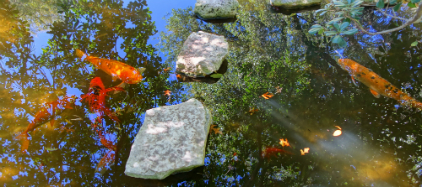
Taniguchi garden celebration tonight: the Garden Club of Austin hosts an evening to honor the Japanese garden of Isamu Taniguchi, with tours led by his grandson Evan. 6:30 p.m. To attend, RSVP president@thegardenclubofaustin.org.
The garden is within Zilker Botanical Gardens. Full details here: The Garden Club of Austin; video link ❦
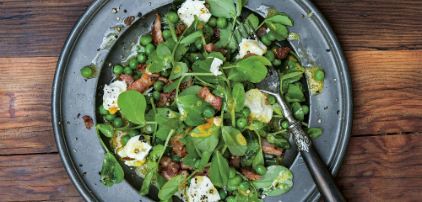
Spring pea, pea shoot, pancetta and goat cheese salad: 'This has to be the prettiest spring salad ever,' writes Clodagh McKenna. 'The delicate peppery taste of the pea shoots alongside the crispy, smoky pancetta, sweet peas, and creamy goat cheese is divine.' Splendid Table ❦
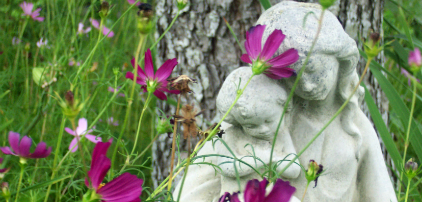
The Healing Power of Gardens: as a physician, Oliver Sacks would take his patients to gardens whenever possible. 'All of us,' he writes, 'have had the experience of wandering through a lush garden or a timeless desert, walking by a river or an ocean, or climbing a mountain and finding ourselves simultaneously calmed and reinvigorated, engaged in mind, refreshed in body and spirit.' New York Times ❦
 
Central Texas Gardener: Jennie and Matt Horvath, owners of Wimberley Gardens, are Tom's studio guests. On tour, a visit to the plant-tiered waterfall, ponds and front yard sedge of the Bennetts. John explains how to control fungal disease and insect pests. Saturday 4 p.m. Sunday 9 a.m. KLRU ❦
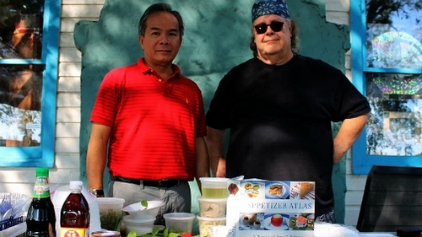 Five Essential Thai Herbs
by Chris Winslow
One Sunday afternoon several years ago at the nursery we hosted a cooking event presented by Sap Apisaksiri, owner of Sap's Fine Thai Cuisine (2024 South Lamar) and author / consultant Mick Vann.
As 2 o’clock approached we soon found our auditorium behind the old house overflowing with a mixture of culinary amateurs and professionals, and for two hours Sap and Mick taught us some of the secrets of cooking with Thai herbs. Below are some of the essential Thai herbs which they spoke of. (All are easily grown in the Hays and Travis counties.)
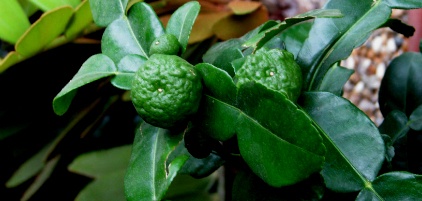 Thai Lime (Citrus hytrix)
This is a lime tree that can be grown from cuttings or seed. The lime is rough and bitter and the tree is quite thorny. But it is the leaves that are used in abundance in Thai recipes.
The zest of the fruits is also used in making curry pastes. Like most citrus, Thai lime (known as Mak-root in Thailand) should be given a full sun to part shade exposure.
Since most citrus isn’t cold hardy, Thai lime should be grown in a container, so it can be protected in the winter. They are consid-ered heavy feeders and should be given frequent applications of plant food, especially during the growing season (spring to fall). If you have ever wanted to grow citrus, this maybe a good place to start.
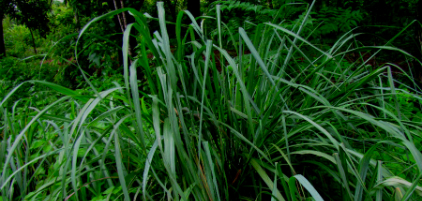 Lemon Grass (Cymbopogon citrates)
This is a clump grass that is easy to grow and is used heavily in many Thai recipes. It can grow to a height of 4 feet and loves a sunny exposure.
Lemon grass likes a deep soil, rich in compost, and a protected spot away from the winter wind. After the first frost you should cut it back and mulch it heavily.
The fleshy part base of each stalk is used for cooking. It should be minced finely and ground in a food processor. Lemon grass is used to make curries, soups, and teas.
 Galangal Ginger (Alpinia galangal) Galangal Ginger (Alpinia galangal)An exotic ginger with greenish-blue leaves and beautiful white flowers. It grows 4 to 5 feet in height and spreads via under-ground roots or rhizomes.
Galangal ginger, or khaa as it is known in Thailand, flourishes in the shade and requires some winter protection. If it is planted outside, it should be placed in a protected spot and mulched heavily for winter.
It also does well as an indoor plant. Grown indoors, it should be given a sunny spot close to a window. The fleshy rhizome of this plant can be harvested for use in soups such as tom-khaa, and in stews.
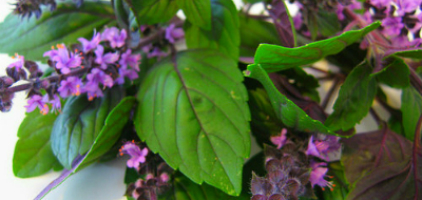 Thai sweet basil (Ocimum basilicum)
Called horapa in Thai, this is an easy-to-grow summer annual herb related to sweet basil. It has a paler green leaf with purplish coloration close to the flower bracts.
Like all basils, it enjoys a sunny exposure and moist, well-drained soil. Basil always dies away after the first bout of cold weather.
However it can be grown in a sunny kitchen window or garden room. One can also save the seed for next spring’s planting. Thai sweet basil is used as a garnish for its aromatic qualities.
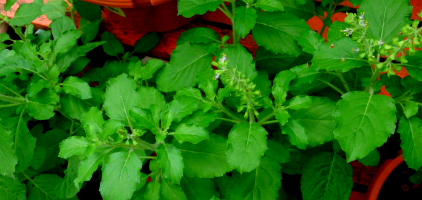 Holy Basil (Ocimum tenuiflorum)
This is also very easy to grow in the spring through fall garden. Its leaves and flower bracts are purplish in color, adding a striking ornamental effect to the garden. Holy basil is always cooked before eating. It is used for stir-fry and has a very aromatic, peppery flavor. Happy gardening everyone!
|
 It's About Thyme Legacy Publications.
Contact newsletter editor Darrel Mayers with any ideas for articles or interesting links at internationalrain@yahoo.com (hitting 'reply' to this email won't work) |
|
|